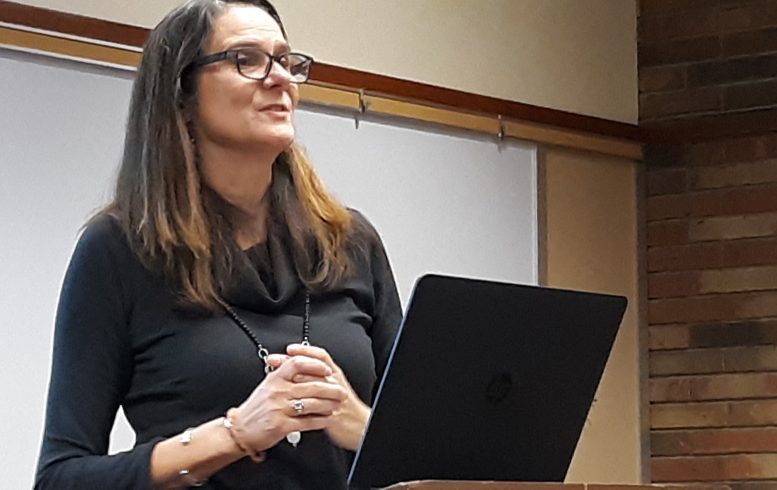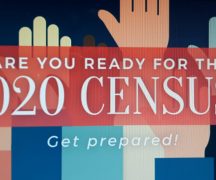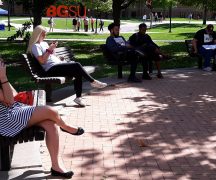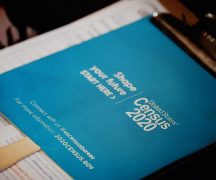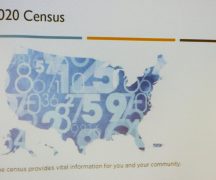By JAN LARSON McLAUGHLIN
BG Independent News
Wood County residents need to know the U.S. Census counts.
It counts when determining how many congressional members Ohio gets, how much the region gets in federal highway funds, and which businesses want to invest here.
The League of Women Voters in Bowling Green hosted a program last week focusing on the importance of the U.S. Census count which rolls around every 10 years – the next one in 2020.
A demographer and a census official talked about the value of collecting accurate statistics.
The count doesn’t come without controversy. This time around, the addition of a question about U.S. citizenship is still being debated. Despite some claiming that only citizens should make the official tally, the founders were clear, according to Dr. Wendy Manning, president of the Population Association of America, and a sociology professor at BGSU.
“It’s meant to count all the people who live here,” Manning said.
The U.S. Constitution required the population count every decade – with 2020 being the 24th count.
The first census in 1790 had six questions, was conducted by U.S. marshals going door-to-door over an 18-month period. Counted were free white males age 16 and older; white males under age 16; free white females; those who paid taxes; and the number of slaves.
That first census found nearly 4 million living in the U.S.
The 2020 census – which will be primarily conducted online – is expected to find about 334 million people. Those who don’t respond online or through the mail will still get an in-person visit from a Census Bureau representative.
The questions have varied over the years – in number and subject matter, Manning said. Like the original census, the 2020 census will have relatively few questions at six or seven, depending on the outcome of the citizenship question debate.
Following are some of the questions that formerly appeared on census surveys:
- Number of insane or blind residents in the home in 1840.
- Number of paupers or convicts in the household in 1850.
- Number of English speaking residents in 1890.
- Number of Hispanic residents in the home in 1980.
- Number of unmarried partners in 1990.
- Number of multiracial partners in 2000.
The number of Native Americans living on reservations were not counted until 1990.
“Over time lots of people have been left out of the census,” Manning said.
The number of questions peaked to 34 in 1920, Manning said.
“It became quite a burden,” she said of filling out census questionnaires. So the number of questions was cut, and the Census Bureau turned to an annual American Community Survey given to fewer people for more detailed and more up-to-date information. Those surveys collect data for the Centers for Disease Control, the Justice Department, and unemployment statistics.
The 2020 census will have a question on the number of same-sex marriages. And it will be available in 13 languages: English, Spanish, Chinese, Vietnamese, Korean, Russian, Arabic, Tagalog, Polish, French, Haitian Creole, Portuguese and Japanese – plus in Braille.
Over the centuries, the census has provided a plethora of information for “nerdy” demographers like Manning – though the specific data for each household isn’t made public until 72 years after its was collected.
Though the U.S. Census Bureau promises confidentiality, it doesn’t have a spotless history.
“We have misused census data,” Manning said.
During World War II, Japanese Americans were located for internment by census information.
“For years, the Census Bureau denied it,” Manning said. “But some clever researchers figured it out.”
So it’s understandable that some people are suspicious of the citizenship question being considered. Some question if non-citizens will be targeted for deportation.
That is troubling on multiple levels for Manning, who doesn’t care if people are citizens or not.
“From a science perspective, all I care about is getting an accurate count,” she said. “So I am biased.”
By law, people residing in the U.S. are supposed to answer the census. But Rose Simmons, of the Census Bureau office in Ohio, said many fail to fill out the questionnaire.
“There are many people who don’t want to answer for a variety of reasons,” Simmons said.
Some distrust the government, but yet freely give out personal information on social media, she said.
“People will tell you what they ate five minutes ago, or if they’re at the mall, but they complain about the government being too intrusive,” Simmons said.
The information collected by the census is vital to Ohio getting its fair share of government resources – including the nearly $700 million distributed by federal government.
It’s also important in congressional representation. Ohio lost two seats in Congress after the last census, and is at risk of losing more after 2020.
“Our estimates tell us Ohio is in danger of losing another congressional seat,” Simmons warned.
The census counts people based on “where you usually sleep” as of April 1 on that particular year. Finding people can be difficult.
“They try to figure out where homeless people are staying” and count them at shelters, transitional hotels or food banks, Manning said.
Those people incarcerated are easy to locate – but hard to determine where they should be registered as residents.
“We know where they are, but that might not be their normal home,” Manning said.
College students living on campus or in rental housing can distort counts. People displaced by hurricanes or fires can make accurate counts difficult. And migrant workers are often distrustful of giving the government information.
So counting people is far from simple.
“It sounds sort of obvious, but then it blows up on you,” Manning said.
The U.S. Census Bureau has a tight timeline – and is trying to get the word out through social media and public appearances. One census employee at the League of Women Voters’ meeting had recently visited 23 churches in two and a half days.
“They want to let people know their voices will count,” Manning said.
Simmons stressed that the numbers determine voting districts, school funding, highway monies, public transportation, and the location of businesses.
“There are so many uses of census data that people don’t understand,” she said.
Simmons asked those present at the meeting to spread the word that answering the census is in the best interest of the community. Each municipality will be asked to establish “Complete Count Committees” to educate residents and encourage participation.
“Help me get the word out to people in your community,” she said. “We’re hoping you will be ambassadors.”
The U.S. Census Bureau is currently hiring people in communities throughout Ohio, with the pay ranging from $13 to $27 an hour. Anyone interested may apply online at 2020census.gov/jobs or call 1-855-JOB-2020.

